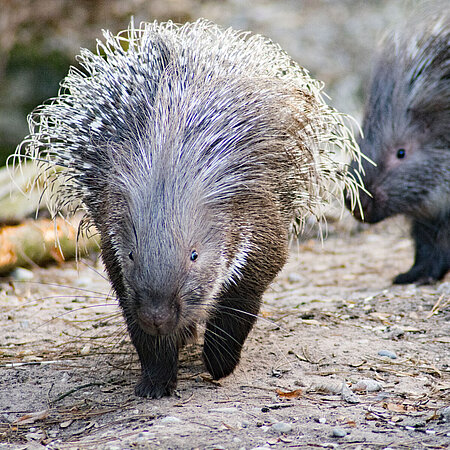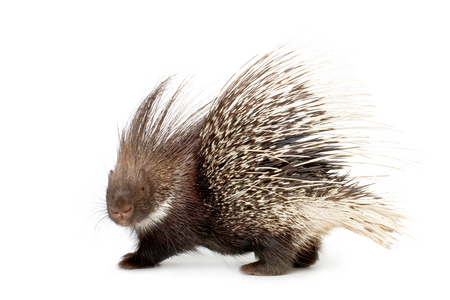Indian crested Porcupine
Hystrix indica

- FamilyPorcupines (Hystricidae)
- Weight11 – 18 kg
- HabitatSteppes, forests and mountains
Defensive quills
The porcupine’s quills provide an effective defence mechanism against predators such as big cats and birds of prey. When danger is sensed, the nocturnal rodent raises its quills to appear twice as large, growls and hisses, and rattles the hollow quills at the base of its tail to warn off potential attackers. If a predator persists, it will launch a backward attack, ramming its rear against the menacing animal. Porcupines are known to have killed tigers and leopards in this way.

Offspring
Porcupines live in monogamous pairs with their young. The female gives birth to one to four porcupettes after a gestation period of about 100 days. The young weigh ca. 500 grams at birth and are covered by short, soft quills, which harden within a few days. Porcupettes are nursed by their mother for the first two months. They reach sexual maturity at around one year of age.
The porcupine’s quill can grow up to 40 cm long and is the longest quill of all mammals.
Distribution
